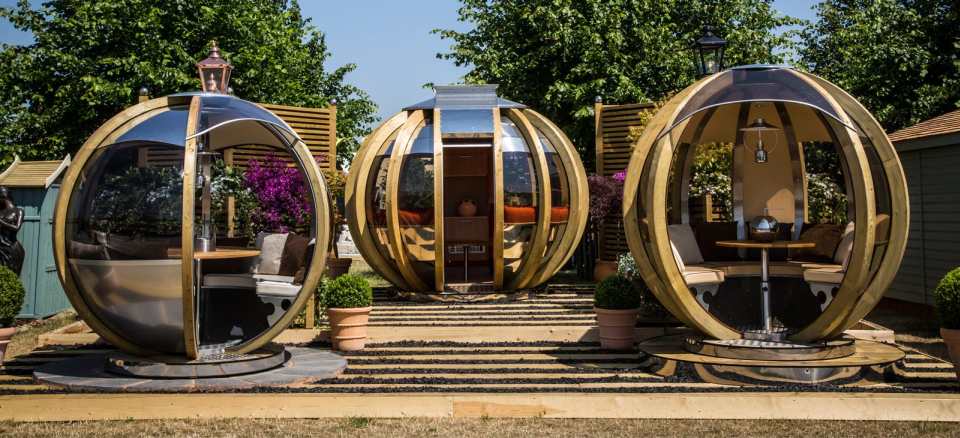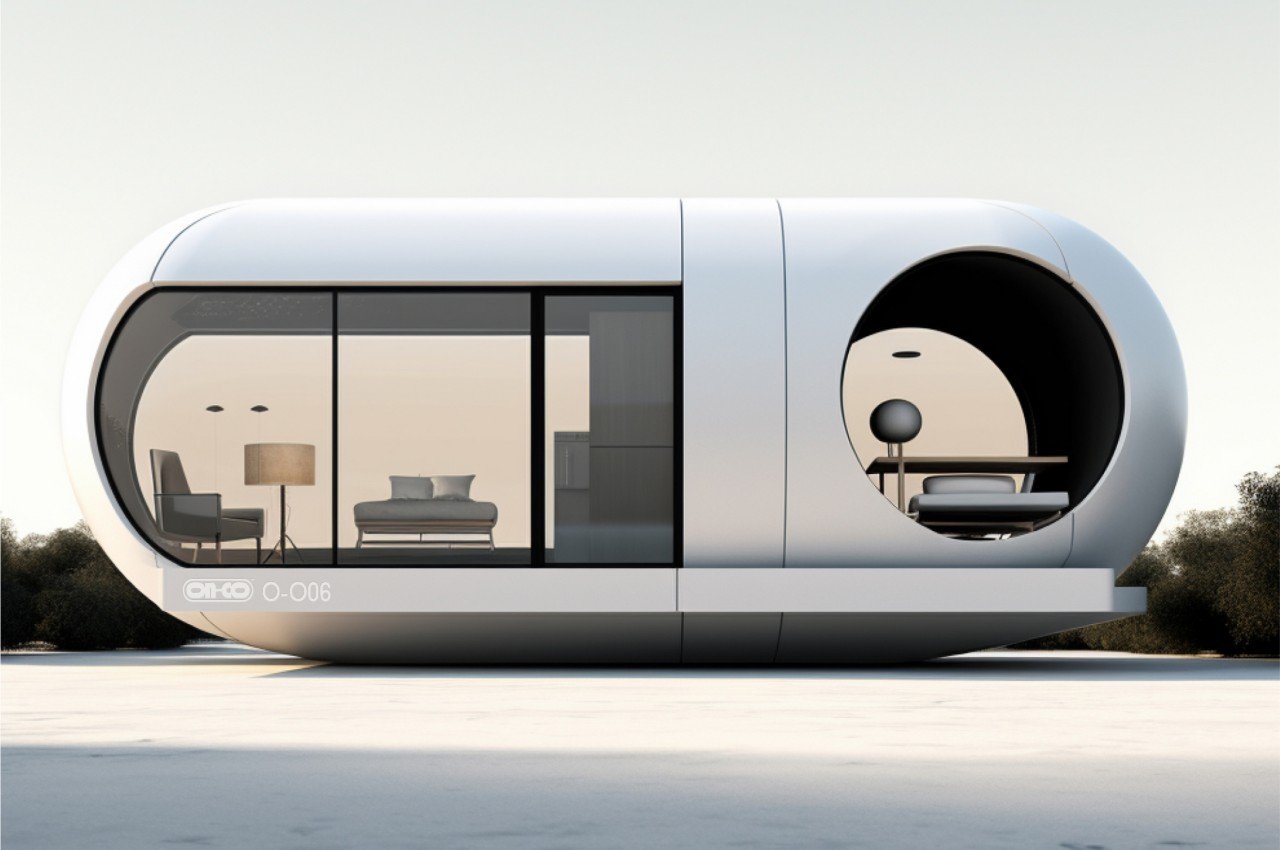Discover the Unique Appeal of Capsule Homes Australia for Eco-Friendly Living
Why Modular Homes Are the Future of Sustainable Living
Modular homes are significantly acknowledged as a pivotal service for sustainable living, providing a blend of efficiency, cost-effectiveness, and environmental advantages. Their building and construction in regulated environments dramatically minimizes waste and enhances precision, while the potential for including innovative energy-efficient systems places them as a forward-thinking alternative in real estate. The flexibility of modular layouts allows for the assimilation of lasting innovations and materials customized to specific requirements. As we navigate the obstacles of urbanization and ecological sustainability, one need to consider just how these homes might redefine our strategy to living areas.
Ecological Benefits of Modular Residences
The ecological benefits of modular homes stand for a substantial step toward sustainable living. These homes are constructed in regulated factory settings, which considerably decreases waste generated during the structure process. By enhancing products and decreasing excess, modular building contributes to a more reliable use sources compared to conventional building methods.
Additionally, modular homes are often designed with power effectiveness in mind. Lots of incorporate sophisticated insulation methods, energy-efficient windows, and lasting products, adding to reduced power consumption. This can cause minimized greenhouse gas exhausts over the life expectancy of the home, improving its overall ecological account.
The ability to transport and put together modular components on-site additionally minimizes the carbon footprint connected with building and construction logistics. Furthermore, several modular homes are built to be conveniently upgradeable and versatile, allowing property owners to apply sustainable modern technologies, such as photovoltaic panels and energy-efficient home heating systems, over time.
Inevitably, the environmental advantages of modular homes not only advertise lasting living however likewise urge a more accountable technique to real estate development, lining up with international efforts to combat climate change and maintain natural deposits for future generations.
Cost-Effectiveness and Affordability
Structure a home usually stands for one of the biggest economic investments individuals make in their life time, and modular homes use an engaging option for those seeking cost-effectiveness and price. Among the main advantages of modular homes is their reduced building and construction prices contrasted to standard site-built homes. The streamlined manufacturing procedure enables for substantial cost savings on labor and materials, which converts to reduce costs for customers.
Furthermore, modular homes typically have much shorter building timelines. This not just lowers expenditures associated with funding and insurance however also alleviates the threats associated with rising cost of living and varying market conditions. Lots of buyers discover that modular homes can be customized to fit their budget plans without sacrificing top quality or design.
Furthermore, energy performance is frequently constructed right into the style of modular homes, causing reduced utility costs gradually. Several producers prioritize lasting products and practices, further improving the long-lasting financial viability of these homes. Overall, the mix of preliminary cost financial savings, quick building and construction, and recurring power effectiveness makes modular homes an attractive choice for those looking to buy sustainable living without breaking the financial institution.
Efficiency in Construction
Modular homes not just offer economic advantages however additionally stand out in building efficiency. The modular building procedure involves the simultaneous building and construction of components in a factory setting while site preparation occurs concurrently. This parallel strategy significantly decreases the total timeline from fertilization to conclusion, frequently cutting building time by up to half compared to standard approaches.
Moreover, factory-controlled settings enhance quality control. By making use of accuracy manufacturing techniques, modular homes are developed to precise specs, minimizing waste and errors. This consistency not only results in a better item but additionally adds to sustainable methods by reducing material waste throughout building.
Additionally, the use of contemporary technology and automation in the production procedure enables quicker assembly and lowered labor prices. Once the modules are transferred to the website, they can be successfully put together, even more accelerating the timeline. This structured process is not only useful for builders but likewise minimizes disruptions to the surrounding environment during construction.
Customization and Layout Adaptability
A remarkable selection of modification choices identifies modular homes, permitting home owners to customize their home to meet certain requirements and preferences. This design flexibility is a hallmark of modular building and construction, allowing clients to select everything from layout and area formats to coatings and fixtures. Unlike traditional homes, modular layouts promote a joint approach where home builders and architects work very closely with home owners, making sure that each aspect straightens with aesthetic needs and private way of livings.
Moreover, modular homes can be quickly reconfigured or expanded, suiting changing household characteristics or developing individual tastes. This flexibility not only improves the home's performance but additionally adds to long-lasting sustainability, as house owners can customize their spaces as opposed to look for new real estate solutions.

Future Patterns in Lasting Housing
Arising trends in lasting housing are reshaping useful content the landscape of domestic building, stressing environment-friendly practices and ingenious modern technologies. One significant pattern is the integration of wise home innovation, which boosts power effectiveness with automated systems that check and maximize power intake. This not only minimizes energy expenses however additionally adds to a lower carbon impact.
Furthermore, making use of sustainable materials is ending up being significantly usual. Builders are selecting recycled, locally sourced, or rapidly sustainable materials, which decrease environmental effect and assistance neighborhood economic situations. Modular homes are obtaining appeal for their lowered waste throughout building and construction and their adaptability to numerous surfaces and environments.
One more pattern is the consolidation of environment-friendly roofing systems and living walls, which improve air quality and provide all-natural insulation. These features likewise promote biodiversity in urban areas.
Verdict
To conclude, modular homes arise as a critical remedy for lasting living, using considerable environmental advantages through decreased waste and energy efficiency. Their cost-effectiveness and price attend to the growing housing needs in metropolitan areas, while reliable building and construction processes boost overall performance. The intrinsic personalization and design adaptability deal with diverse choices and requirements. As trends in lasting housing evolve, modular homes are poised to play a critical function in promoting green living methods for click to read more future generations.
Building a home typically stands for one of the largest monetary investments people make in their lifetime, and modular homes use a compelling remedy for those seeking cost-effectiveness and cost. One of the key advantages of modular homes is their lower construction prices compared to standard site-built homes. Overall, the combination of preliminary expense savings, quick construction, and ongoing power performance makes modular homes an appealing option for those looking to invest in lasting living without damaging the bank.
Ultimately, the customization and layout flexibility provided by modular homes make sure that they are not simply frameworks, but personalized refuges that mirror the unique identities of see here their residents while advertising lasting living methods.
